By: Lynn Vaccaro, Great Bay National Estuarine Research Reserve
September 2021
The Great Bay Living Shoreline Project has selected four locations where teams of professional engineers, landscape architects, and ecologists will be developing suggested living shoreline designs. The four sites were chosen to illustrate the potential for living shoreline approaches to be adapted for different site conditions and diverse landowner goals.
After conducting a site suitability assessment and interviewing potential landowner partners, the project team settled on four Great Bay locations for living shoreline design work. The team intentionally chose a diverse set of properties and landowners, each with different reasons for pursuing shoreline restoration, including managing coastal erosion, conserving marsh habitats and enhancing public access and shoreline aesthetics. The four sites also present unique design challenges because they include both public and private lands, highly urbanized shoreline and a marsh that is home to rare bird species.
Solving design challenges at four sites
Click on the tabs below to learn more about each of the four sites.
The Town of Newmarket is eager to enhance the resilience and aesthetics of Schanda Park, which is an important part of their downtown waterfront. This is a small, popular town park along the Lamprey River in downtown Newmarket. The park includes a boat ramp and aging riprap walls that the town hopes to make more resilient.
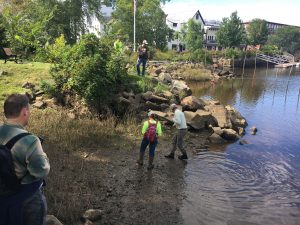
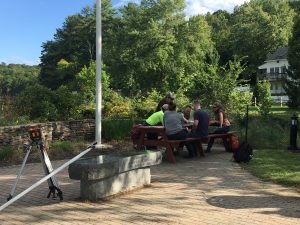
The marsh edge and bluff along the Moody Point Community Association is eroding and could undermine the stability of their recreational assets. This site is owned by a homeowner’s association and includes a diverse mix of habitats and shoreline uses. The saltmarsh and upland edge are eroding in several places and residents want to protect the marsh, shoreline structures, and water access points.
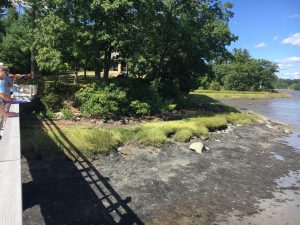
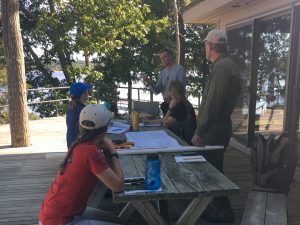
Adjacent to the Chapman’s Landing boat ramp there is important salt marsh habitat with an eroding marsh edge. This large saltmarsh site is owned by NH Fish and Game and includes an important all tide boat launch on the Squamscott River. The state is interested in assessing and managing erosion along the saltmarsh edge while also protecting valuable nesting habitat for the saltmarsh sparrow.
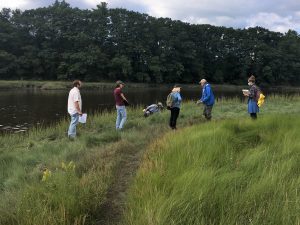
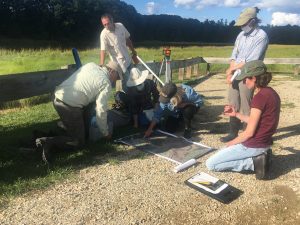
This private home includes an eroding salt marsh shoreline along the Bellamy River. The landower is interested in trying some nature-based techniques to stabilize the marsh edge.
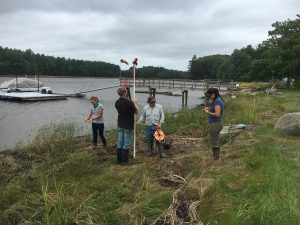
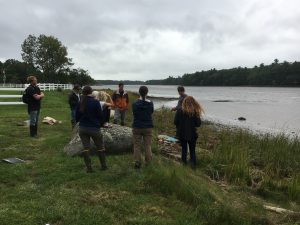
Each of the landowners is interested in exploring Living Shoreline techniques, which use plants, stone, sand fill and other organic material to stabilize shorelines and enhance coastal habitats. Nature-based techniques can help protect shorelines as seas rise and erosion pressure increases, but designs need to be customized for a particular site. The NH DES Living Shorelines webpage provides additional resources, including an opportunity to request a free property profile to help determine if your property is suitable for a living shoreline.
Leveraging diverse professional expertise
The Great Bay Living Shoreline project team recruited a diverse group of 24 engineering, landscape, and ecological design professionals to participate in a 6-month program to learn about and apply nature-based solutions for shoreline erosion issues. The group has been organized into four multi-disciplinary Design Teams that will be developing suggested living shoreline designs for each of the selected properties around Great Bay.
Wetland ecologist David Burdick and civil engineer Tom Ballestero, both from University of New Hampshire, will be working alongside Design Teams during field work and workshops. They will be sharing lessons learned from regional projects (see: project profiles) and the recently completed living shoreline project at Wagon Hill Farm in Durham. Watch this virtual field trip to learn more:
Creating a pipeline of new projects
At the end of this project, the four new living shoreline designs will be made available on the project’s website to serve as examples and inspiration for projects around Great Bay and beyond. Contact information for the 24 professionals involved in the design process will also be shared to improve access to local expertise to help landowners develop engineering plans, plant lists and permit applications for successful living shoreline projects.
The Great Bay Living Shorelines Project is supported by a grant from the National Fish and Wildlife Foundation with matching support from the Town of Durham. The project is led by the New Hampshire Department of Environmental Services Coastal Program, the University of New Hampshire, the Great Bay National Estuarine Research Reserve, the Piscataqua Regional Estuary Partnership, the Great Bay Stewards, and the Strafford Regional Planning Commission.
